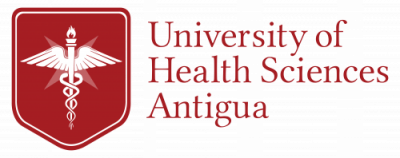TEN FACTORS TO CONSIDER WHEN CHOOSING A SPECIALTY
The proliferation of specialties (and subspecialties) means that every physician practices a different type of medicine. Even within the same specialty, no two doctors are alike. Faced with all this diversity, how do medical students commit to a single specialty?
Many go through a “process of ‘trying on possible selves’ (i.e., projecting themselves into hypothetical career and personal roles).” Others prefer to choose through a process of elimination—tossing out specialties that do not meet their predetermined criteria. Others will choose based upon their grades in the basic sciences and clerkships, in addition to performance on examinations, which can give a student an indication of how competitive they are for a specific specialty.
Regardless of the individual approach, there are ten factors that all medical students should consider when choosing a medical specialty. This week, we will consider the first five.
1. GENERALIST OR SPECIALIST
The 20 medical and surgical disciplines can be further subdivided into three major specialty groups: generalist, specialist, or supportive. Before committing to a specialty, future physicians first need to decide what type of doctor they would like to become.
The generalist specialties are those in which physicians practice primary care medicine. Classically, these have always included family practice, internal medicine, and pediatrics. For many, psychiatrists and obstetrician-gynecologists also fall within this category. All generalists have broad medical knowledge, encompassing a variety of common (and often chronic) problems in their community.
An integral part of their patients’ lives, they provide long-term continuous care in a single setting, referring their patients to specialists only when necessary. Preventive medicine—a major part of their job—can catch early signs of disease and keep patients from ending up in the emergency room with serious problems. As the first doctor to see a patient, a generalist must have greater tolerance for the unknown, especially when dealing with signs and symptoms that may not fall into a neat diagnosis. Generalists also have to cope with the pressure to know just about everything.
Although pediatrics, for instance, is still considered a specialty, a true specialist, by definition, cares for a specific region of the body or a narrowly defined area of medicine. Ophthalmologists, cardiologists, urologists, and neurologists—just to name a few—all fit this description. As practitioners of secondary or tertiary care medicine, specialists prefer action-oriented patient interactions. Within their narrow scope of practice, they perform many technical procedures, like cataract surgery or cardiac catheterization. As consultants, nearly all practice on the basis of patient referrals from primary care physicians. After solving the clinical problem at hand (e.g., left hip replacement), specialists usually schedule infrequent follow-ups, leading to less long-term involvement in their patients’ lives. Most practice in the clinic and the hospital. Many are affiliated with large medical centers.
Several specialties are neither medical nor surgical—they function independently as the supportive disciplines of medicine. Radiology, physical medicine and rehabilitation, pathology, anesthesiology, radiation oncology, emergency medicine, and nuclear medicine fall within this category. They are all hospital-based specialties. Although not front-line doctors, these physicians still play a crucial role in patient care. Without them, patients would not make it through surgery alive, receive accurate diagnoses from imaging and biopsy studies, or receive the correct doses of radiation therapy to treat their cancer. Because of their anonymous roles and minimal patient contact, these behind-the-scenes doctors tend not to get the recognition they deserve from their patients. Without external rewards, they instead have to derive their professional satisfaction from within.
2. INTELLECTUAL CHALLENGE AND CLINICAL CASES
Radiologists cannot operate on a patient’s heart, dermatologists cannot administer general anesthesia, and neurosurgeons should not be delivering babies. Because the subject matter and type of patient care differs quite a bit across the specialties, every doctor practices a distinctive brand of medicine. Take ophthalmology and rehabilitation medicine, for instance. Lying on the opposite ends of the specialty content/patient care spectrum, these two fields almost seem like completely different professions!
At the most fundamental level, with all other factors aside, medical students should love the intellectual content of their specialty. Students with a genuine interest in the underlying clinical material and basic science of a certain discipline will find themselves voraciously reading its textbooks and journals, wanting to know more about the specialty’s diagnostic challenges. To gauge the appeal of the clinical problems found in a specialty, read the current literature for 1 week. If you love clinical pharmacology and physiology, then perhaps a career in anesthesiology is your destiny. If studying anatomy brings up bad memories from your first year of medical school, then stay away from surgical specialties, radiology, and pathology. Above all, you should never have to force yourself to love an area of medicine.
Making a good match depends on the “discovery and comparison of information about three distinct domains: one’s self, the others practicing in a specialty, and the content of that specialty.” When it comes to the third domain, nearly all students rely heavily in the end on their gut feelings. After much deliberation, you will become aware of feeling at home in certain fields of medicine. Those that like immediate interventions, technical skills, and urgent problems find themselves drawn to surgical specialties or medical subspecialties. Students who prefer lots of interpersonal contact, a diverse patient population, and preventive medicine usually select a primary care specialty.
3. PATIENT CONTACT
All physicians-in-training choose careers in medicine, perhaps the noblest of all professions, because they want to help people—to take care of sick patients, cure disease, and make a difference in people’s lives. Yet until medical students finally spend hours with patients in the hospital while on clinical rotations, they really have no idea what this experience is like. Most love talking with patients, forming relationships with them, and examining them for signs of disease.
Others, however, find that interacting with sick people is less appealing than they had imagined. They do not like performing physical examinations, for example, or dealing with gushes of body fluids or the smell of infected wounds. No matter what your colleagues might say, wanting a specialty with more (or less) patient contact has no bearing on how good a physician you will be. There is a place for everyone in medicine—even for those who decide to work behind the scenes. Radiologists and pathologists, who have basically no contact with patients, are equally as righteous doctors as internists, who interact with and examine patients in every single encounter. Every specialist or subspecialist has an important role in patient care; some just have more face time with patients than others.
You should decide how much patient contact you want in your career and rule out specialties that may not meet your needs. If long-term relationships and continuity of care are important, consider areas like internal medicine and family practice. If you like getting down and dirty, think about careers in emergency medicine, obstetrics-gynecology, and surgery. In some specialties, like urology and orthopedic surgery, doctors only have to perform focused physicals (instead of examining everything). Cleaner specialties—those with lots of patient interaction but not much physical contact—include psychiatry, ophthalmology, and radiation oncology. In fields like emergency medicine and anesthesiology, contact with the patient is typically short and to the point
4. TYPES OF PATIENTS
Every physician—including pathologists working in the laboratory—interacts with patients in some way. (One cannot practice any form of medicine without patients!) Many aspiring doctors forget to factor the different types of patients into their specialty decision. Take a closer look at the typical patient in the specialty you are considering. Ask yourself whether or not you could thrive both emotionally and professionally in that type of doctor–patient relationship.
Emergency medicine physicians, for instance, are always dealing with many angry patients with non-emergent complaints who have been kept waiting for hours on end. Pediatricians have to interact with demanding, concerned parents in addition to sick infants and children. Oncologists (medical, surgical, and radiation) have patients with mortal diseases that typically lead to poor outcomes despite aggressive treatment.
Obstetricians manage a highly litigious group of patients who could slap them with a malpractice suit for any minor defect in their baby.
Although these examples seem like stereotypes, the maxim that all doctors are not equal also holds true for their patients.
5. SOCIAL EXPECTATIONS AND PRESTIGE OF THE SPECIALTY
The selection of a specialty should be your own choice. Think about the areas of medicine in which you are the happiest and forget about how others (family, friends, and colleagues) might view your chosen specialty. Always remember that every type of doctor has an important role in the big picture of medicine, and the idea that one specialty garners more respect and prestige than another is really just a matter of personal opinion.
Because all medical students have excelled academically their entire lives, those who subscribe to these beliefs find it hard at this point to stop being the best. For them, a career in family practice or psychiatry may not carry as much social status as being a world-renowned neurosurgeon or earning a position in ophthalmology, an ultracompetitive specialty. Yet as a soon-to-be-physician, it is no longer necessary to prove yourself. By putting aside external influences such as social prestige and others’ expectations, you will likely choose the right specialty and end up a much happier doctor.
Next week, we will explore the remaining five factors you should consider when choosing a medical specialty.
TAKING YOU FROM A DREAM TO REALITY
If you’re ready to live your dream of becoming a physician, then UHSA can make that dream a reality!
UHSA has been producing physicians since 1982! We are the second oldest private medical school in the Caribbean basin. We know what you need to become a world-class physician, and have three programs to get you there.
Traditional MD Program – if you have the premedical requirements in place, then we would welcome you into our traditional MD program.
MD/Masters of Public Health (MPH) Program – if you have an interest in public health, international health, epidemiology, or even just enhancing your credentials when it comes time to apply for residency, then our joint MD/MPH program is right for you.
Premedical Program – Changing careers? Maybe you don’t have the premedical requirements, but have always had a dream of becoming a doctor? Then our premedical program is right for you. Using the same innovative problem-based learning techniques of our traditional MD program, this will give you the skills you need to earn your MD in the shortest time possible.
Contact our Admissions Team today to learn more!


